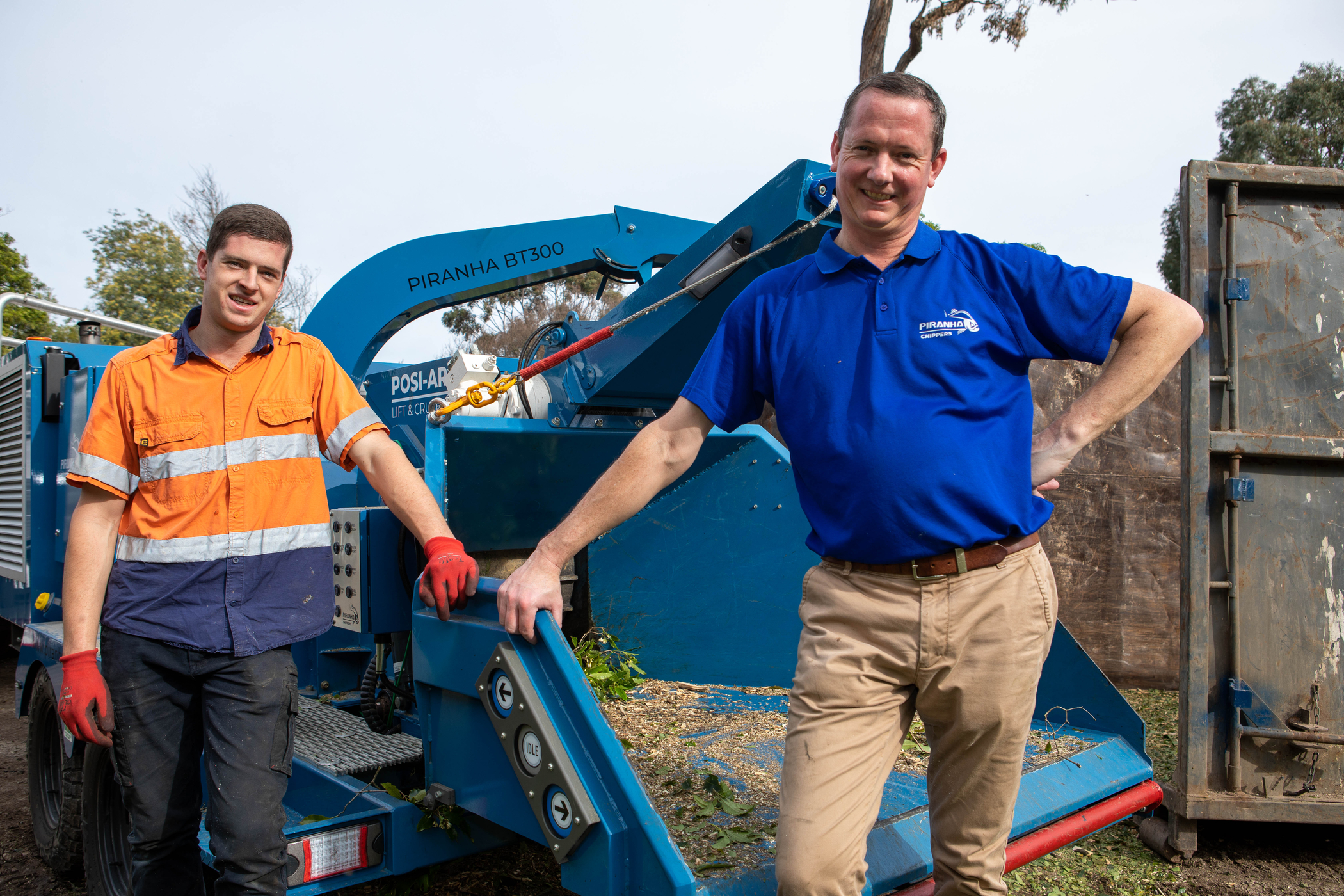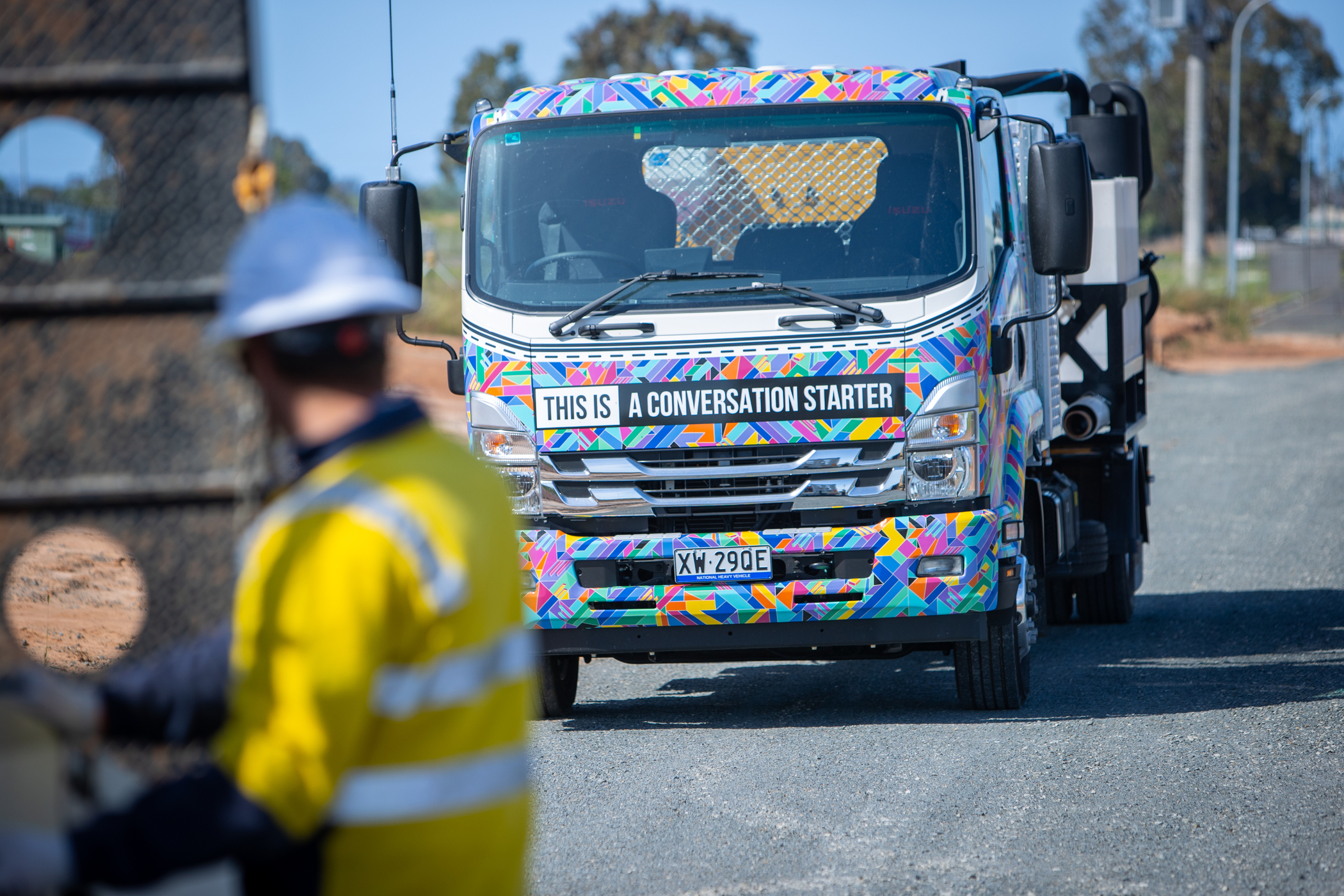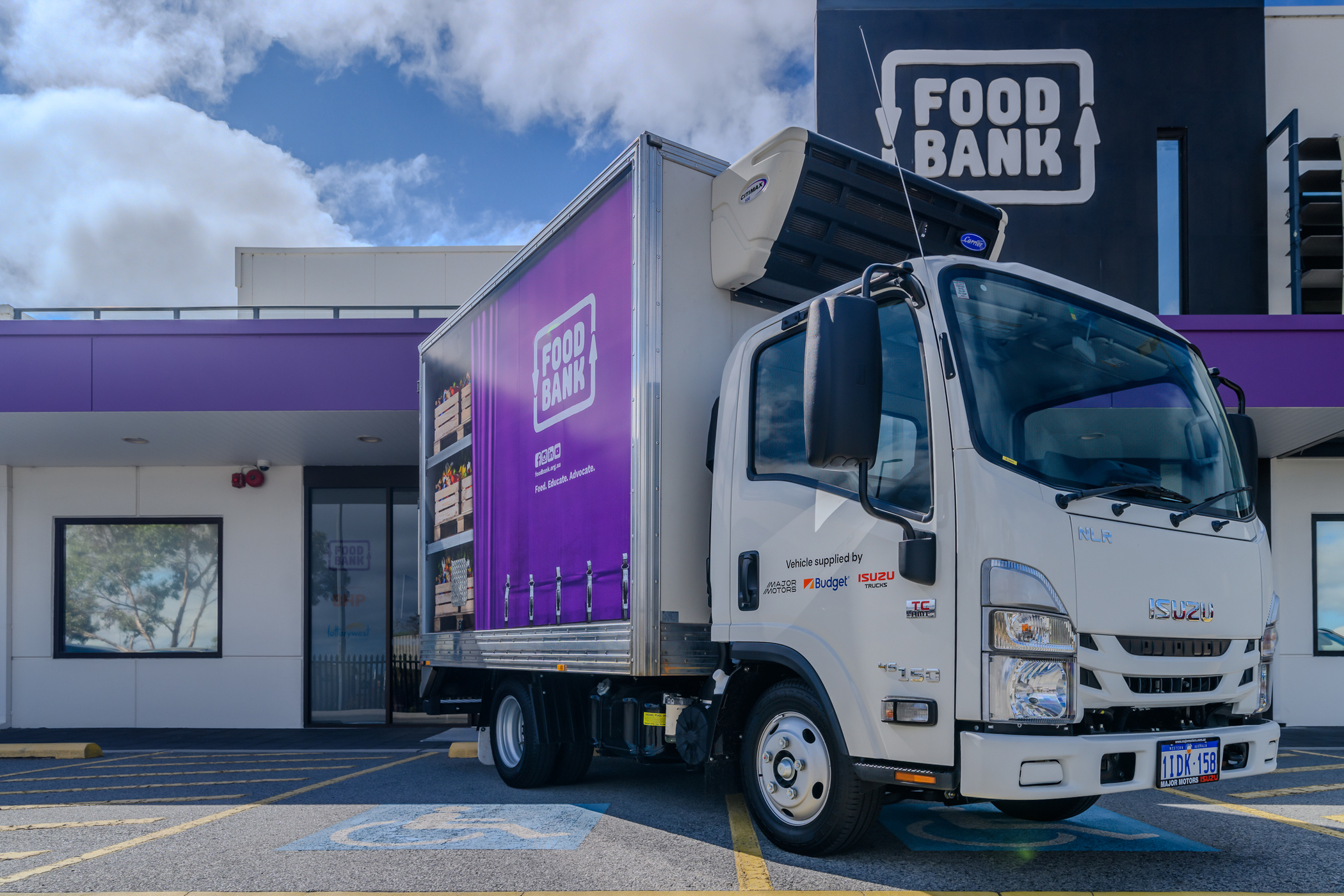Evolution Of Truck Tech: Past, Present & Future

 Developments in heavy vehicle technology have paralleled our collective desire to transport goods faster and more efficiently over increasing distances.
They say that necessity is the mother of all invention and our hard-wired desire to travel to new lands to trade and communicate with distant cultures has created a need to be able to transport our people, culture and possessions with us.
While the first cargo transport vehicles were crude sleds, wheelbarrows and horse-drawn wagons, our necessity to carry more over longer distances has resulted in we humans placing a great deal of importance on transport technology.
Fast-forward to contemporary times and change in this space is occurring at break-neck speed.
Transport continues to evolve at an exponential rate and as we stand on the cusp of historic transformation in the transport realm, we thought it timely to take a look at the major milestones in truck technology along with the exciting new frontiers of our industry.
Major Milestones…
Brakes
It’s widely overlooked, but braking technology has had a huge impact on the broader transport industry as a whole. All manner of braking systems have been around for many hundreds of years, but the first widely-used system for cars and trucks was the drum brake, invented by Wilhelm Maybach in 1902.
While the initial design was improved upon in the 1930’s, the problem of converting kinetic energy into heat resulted in an ineffective system which required regular maintenance.
Drum-based braking was simply a part of life for motorists until British carmakers, Jaguar, fielded race cars with disc brakes in the Le Mans Grand Prix race in 1953.
Using this superior technology, they not only won the race, but sparked the beginning of the end of drum brakes.
Of course, with disc brakes came greater braking efficiency, but the loss of control during a panic stop still posed significant safety issues.
In the early 70’s ABS or anti-lock braking systems became more widely implemented, with the first truck-based incarnation, dubbed the ‘Antislittamento,’ was developed by Fiat Veicoli Industriali and installed on a Fiat truck model in 1971.
This system of braking dramatically reduced stopping distances while preventing wheels locking and skidding. Today the ABS system of braking is mandatory on all new cars sold in Australia and is a constant in today’s Australian truck safety suite too.
Stability Control
Electronic Stability Control (ESC) detects the stability and sideways acceleration of a heavy vehicle, making it a vital vehicle safety system.
As most rollover accidents are preceded by evasive maneuvers, the ESC system detects and counteracts this loss of control to prevent a likely rollover.
Widely implemented in passenger vehicles during the 1990’s, the technology was actually developed as early as the 1920’s to help decelerate aircraft during landings.
In the truck world, the adoption of stability control technology has been slower with more widespread acceptance taking place in the early 2000s.
Suspension
Flat surfaces were relatively hard to come by and when early beast-drawn wagons began transporting goods from one location to another.
Indeed, every bump in the road was directly transferred to those occupying the wagon and to the precious cargo being transported. This fundamental requirement of transportation is just as important today (for the same reasons) as it was back then. Protecting drivers and their cargo from unwanted vibrations and of course a smoother, more sufferable ride have been key motivations.
With the advent of airbag suspension and hydraulic suspension in the 1950’s, many advantages were gained to enable a much smoother ride, particularly for trucks.
Fast forward to 2019 and many manufacturers in the truck world now feature the latest in suspension technology, with features such as independent front suspension (IFS), contributing to a more predictable, ‘car-like’ ride.
Cab Design
Developments in heavy vehicle technology have paralleled our collective desire to transport goods faster and more efficiently over increasing distances.
They say that necessity is the mother of all invention and our hard-wired desire to travel to new lands to trade and communicate with distant cultures has created a need to be able to transport our people, culture and possessions with us.
While the first cargo transport vehicles were crude sleds, wheelbarrows and horse-drawn wagons, our necessity to carry more over longer distances has resulted in we humans placing a great deal of importance on transport technology.
Fast-forward to contemporary times and change in this space is occurring at break-neck speed.
Transport continues to evolve at an exponential rate and as we stand on the cusp of historic transformation in the transport realm, we thought it timely to take a look at the major milestones in truck technology along with the exciting new frontiers of our industry.
Major Milestones…
Brakes
It’s widely overlooked, but braking technology has had a huge impact on the broader transport industry as a whole. All manner of braking systems have been around for many hundreds of years, but the first widely-used system for cars and trucks was the drum brake, invented by Wilhelm Maybach in 1902.
While the initial design was improved upon in the 1930’s, the problem of converting kinetic energy into heat resulted in an ineffective system which required regular maintenance.
Drum-based braking was simply a part of life for motorists until British carmakers, Jaguar, fielded race cars with disc brakes in the Le Mans Grand Prix race in 1953.
Using this superior technology, they not only won the race, but sparked the beginning of the end of drum brakes.
Of course, with disc brakes came greater braking efficiency, but the loss of control during a panic stop still posed significant safety issues.
In the early 70’s ABS or anti-lock braking systems became more widely implemented, with the first truck-based incarnation, dubbed the ‘Antislittamento,’ was developed by Fiat Veicoli Industriali and installed on a Fiat truck model in 1971.
This system of braking dramatically reduced stopping distances while preventing wheels locking and skidding. Today the ABS system of braking is mandatory on all new cars sold in Australia and is a constant in today’s Australian truck safety suite too.
Stability Control
Electronic Stability Control (ESC) detects the stability and sideways acceleration of a heavy vehicle, making it a vital vehicle safety system.
As most rollover accidents are preceded by evasive maneuvers, the ESC system detects and counteracts this loss of control to prevent a likely rollover.
Widely implemented in passenger vehicles during the 1990’s, the technology was actually developed as early as the 1920’s to help decelerate aircraft during landings.
In the truck world, the adoption of stability control technology has been slower with more widespread acceptance taking place in the early 2000s.
Suspension
Flat surfaces were relatively hard to come by and when early beast-drawn wagons began transporting goods from one location to another.
Indeed, every bump in the road was directly transferred to those occupying the wagon and to the precious cargo being transported. This fundamental requirement of transportation is just as important today (for the same reasons) as it was back then. Protecting drivers and their cargo from unwanted vibrations and of course a smoother, more sufferable ride have been key motivations.
With the advent of airbag suspension and hydraulic suspension in the 1950’s, many advantages were gained to enable a much smoother ride, particularly for trucks.
Fast forward to 2019 and many manufacturers in the truck world now feature the latest in suspension technology, with features such as independent front suspension (IFS), contributing to a more predictable, ‘car-like’ ride.
Cab Design
 As road networks and distances increased over time, so too did the amount of time drivers spend on the road. This led to truck cab design evolving to make the experience more comfortable, safer and of course more profitable.
As legislation was gradually introduced to limit the amount of time truck drivers could spend behind the wheel, the need for adequate sleeping arrangements became an important focus for manufacturers.
It wasn’t until the mid to late 1950s that truck cabs began to feature crude forms of air conditioning, radio reception and larger sleeping cabins – all of which allowed truck drivers to live and work on the road for longer durations.
These days sleeper cabs come with all the comforts of a modern home. Comfortable air suspended seats with more adjustable settings than a high-end recliner, In-dash audio visual units, satellite television and more.
As road networks and distances increased over time, so too did the amount of time drivers spend on the road. This led to truck cab design evolving to make the experience more comfortable, safer and of course more profitable.
As legislation was gradually introduced to limit the amount of time truck drivers could spend behind the wheel, the need for adequate sleeping arrangements became an important focus for manufacturers.
It wasn’t until the mid to late 1950s that truck cabs began to feature crude forms of air conditioning, radio reception and larger sleeping cabins – all of which allowed truck drivers to live and work on the road for longer durations.
These days sleeper cabs come with all the comforts of a modern home. Comfortable air suspended seats with more adjustable settings than a high-end recliner, In-dash audio visual units, satellite television and more.
 Improvements in engine design have helped to fuel major breakthroughs in transport technology and efficiency.
Turbo Charging
Turbo charging refers to the process of improving an engine’s efficiency and power output by forcing air into the combustion chamber. The process allows an engine to have improved fuel economy, increased torque (power from a standing start) and reduced emissions.
First implemented in diesel-powered trucks in the late 1930’s, the technology became widely implemented throughout the following decades.
With a stronger focus on the environment in recent times, turbo charging has also allowed truck manufacturers to reduce emissions while increasing fuel efficiency, which not only saves money but reduces exhaust pollution such as particulate matter.
Transmissions
The transmission is a mechanism within an engine that transfers a controlled application of power. Often the transmission is described as the gearbox which uses gear trains to regulate speed and torque. With numerous adjustments and improvements to transmission technology over the years, coupled with a growing demand for a more simplified operation, the proliferation of two-pedal, automatic and automated manual transmissions has increased.
These days, the most efficient truck transmission is an Automated Manual Transmission (AMT), which provides operators with smooth and responsive gear changes, doing away with the traditional clutch pedal in favor of a fluid coupling and wet clutch design.
This means that truck operators can choose to drive in automatic or manual mode configurations, offering greater control over performance and usually better fuel economy.
What does the future hold?
Improvements in engine design have helped to fuel major breakthroughs in transport technology and efficiency.
Turbo Charging
Turbo charging refers to the process of improving an engine’s efficiency and power output by forcing air into the combustion chamber. The process allows an engine to have improved fuel economy, increased torque (power from a standing start) and reduced emissions.
First implemented in diesel-powered trucks in the late 1930’s, the technology became widely implemented throughout the following decades.
With a stronger focus on the environment in recent times, turbo charging has also allowed truck manufacturers to reduce emissions while increasing fuel efficiency, which not only saves money but reduces exhaust pollution such as particulate matter.
Transmissions
The transmission is a mechanism within an engine that transfers a controlled application of power. Often the transmission is described as the gearbox which uses gear trains to regulate speed and torque. With numerous adjustments and improvements to transmission technology over the years, coupled with a growing demand for a more simplified operation, the proliferation of two-pedal, automatic and automated manual transmissions has increased.
These days, the most efficient truck transmission is an Automated Manual Transmission (AMT), which provides operators with smooth and responsive gear changes, doing away with the traditional clutch pedal in favor of a fluid coupling and wet clutch design.
This means that truck operators can choose to drive in automatic or manual mode configurations, offering greater control over performance and usually better fuel economy.
What does the future hold?
 With so many significant milestones in the evolution of truck technology already, the coming decades will likely see a greater focus on vehicle and fleet connectivity.
Improvements in technology surrounding hybrid and electric vehicles will be key, along with improved driving infrastructure systems and safety features. There will also be a greater reliance on big data to improve ‘movement’ efficiency.
Connectivity and digitisation are set to become the new frontier of truck and car technology as we endlessly move items and people from point A to point B.
With so many significant milestones in the evolution of truck technology already, the coming decades will likely see a greater focus on vehicle and fleet connectivity.
Improvements in technology surrounding hybrid and electric vehicles will be key, along with improved driving infrastructure systems and safety features. There will also be a greater reliance on big data to improve ‘movement’ efficiency.
Connectivity and digitisation are set to become the new frontier of truck and car technology as we endlessly move items and people from point A to point B.

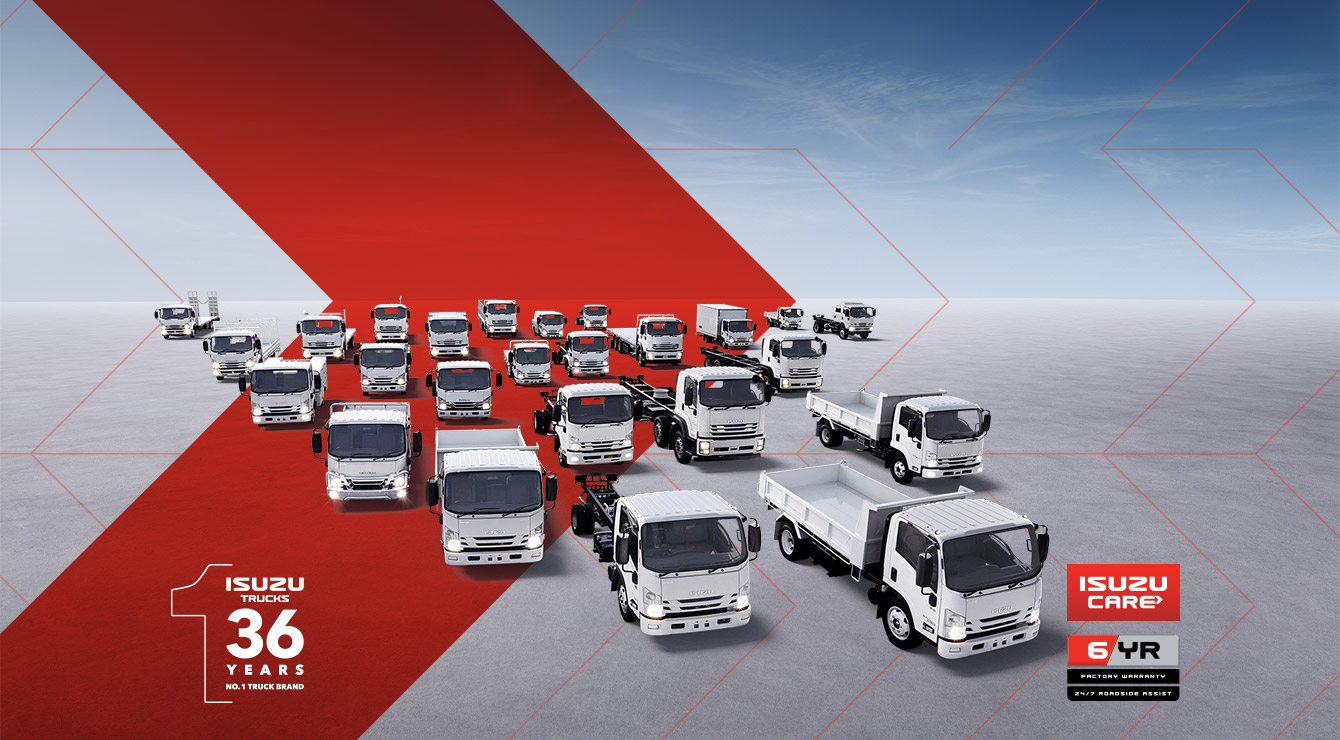
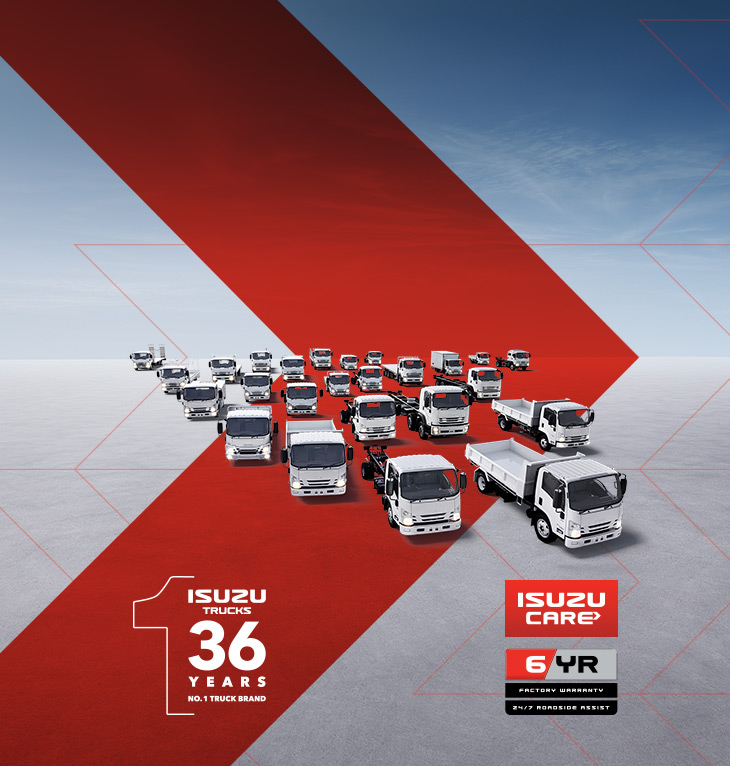
Lead the charge with Australia’s favourite truck.
2025 heralds Isuzu Trucks’ 36th year as market leader.* Number one in more than just sales, though, Isuzu Trucks has an unparalleled dealer support network, customer care program, truck range, and legendary reliability. To get behind the wheel of a winner, get into your nearest Isuzu Trucks Dealer now or visit isuzu.com.au
Learn More
